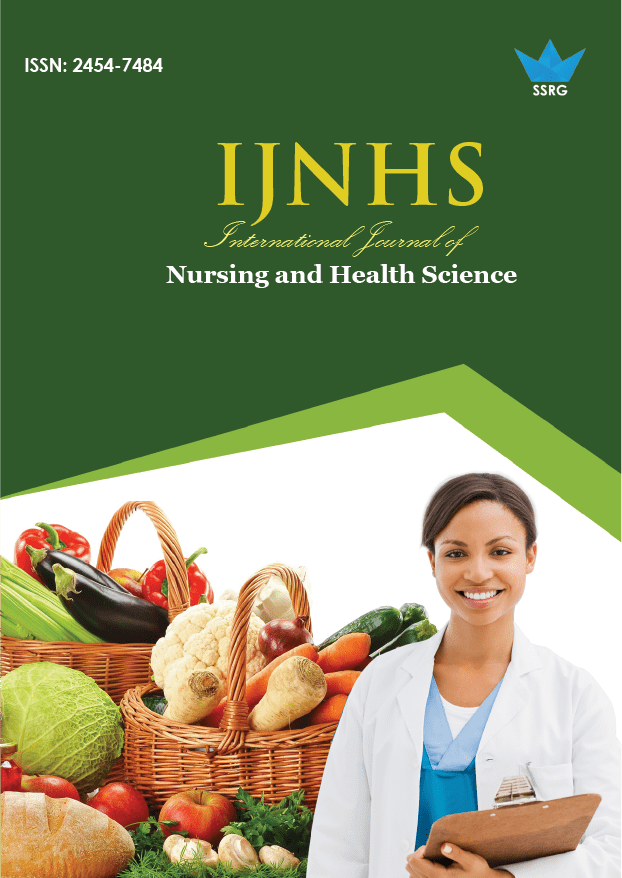Treatment of Avian Influenza

| International Journal of Nursing and Health Science |
| © 2019 by SSRG - IJNHS Journal |
| Volume 5 Issue 3 |
| Year of Publication : 2019 |
| Authors : Kourkouta L., Koukourikos K., Iliadis Ch., Ouzounakis P, Tsaloglidou A |
How to Cite?
Kourkouta L., Koukourikos K., Iliadis Ch., Ouzounakis P, Tsaloglidou A, "Treatment of Avian Influenza," SSRG International Journal of Nursing and Health Science, vol. 5, no. 3, pp. 9-11, 2019. Crossref, https://doi.org/10.14445/24547484/IJNHS-V5I3P102
Abstract:
Avian influenza is an infectious disease affecting all species of birds. It is caused by the type A influenza virus, which is transmitted to susceptible poultry after contact with infected nasal or respiratory secretions and contaminated feces of diseased or infected birds. Most outbreaks of avian influenza in humans occurred in cottages where small flocks of birds are bred. Little has been identified in high-risk groups, such as poultry workers and veterinarians.
The aim of this review was the investigate the effects of avian influenza on humans and its management, as well as measures to prevent influenza pandemics. An extensive review of the recent literature was performed via electronic databases (Medline, Scopus, Google Scholar) and the Association of Hellenic Academic Libraries (HEAL-Link).
The most important disease control measure is the direct killing of infected birds and those who have been exposed to the virus, as well as the proper removal of corpses. The farms having infected poultry should enter quarantine and take measures of disinfection. Hygiene rules should be strictly followed during and after exposure to raw poultry or eggs. The proper measures will contribute to the analytical determination and the effective treatment of the potential threat and its ongoing consequences.
Keywords:
avian influenza, infectious diseases, birds, influenza virus, treatment
References:
[1] Hiromoto, Y., Yamazaki, Y., Fukushima, T., Saito, T., Lindstrom, S. E., Omoe, K., Nerome, R., Lim, W. et al. l Evolutionary characterization of the six internal genes of H5N1 human influenza a virus. The Journal of General Virology, 81(5) (2008) 1293–1303
[2] Timm, C., Harder and Ortrud W., Avian Influenza. Chapter Two in Influenza Report., B.S., Kamps, C., Hoffmann, W., Flying Publisher, (2006). http://www. InfluenzaReport. Com
[3] Rudi, H., Avian Influenza in Pigeons. https://web.archive.org/web/20140222151548/http://www.internationalmodenaclub.com/
[4] Avian Influenza Low Pathogenic H5N1 vs. Highly Pathogenic H5N1, United States Department of Agriculture. (2015).
[5] Alexander, D.J., Brown, I.H., History of high pathogenic avian influenza. Rev. Sci. Tech, 28(1) (2009) 19–38
[6] H5N1 avian influenza: Timeline of major events, World Health Organization, (2012).
[7] Human infection with avian influenza A(H7N9) virus – China, WHO, Disease outbreak news, (2017).
[8] Avian Influenza http://www.european-lung-foundation.org
[9] Soltaridou. E.S., Crisis Management. Avian Influenza. Graduate Thesis, Postgraduate Program, Health Management, The University of Piraeus. Piraeus, (2006).
[10] Evangelopoulos, I., et al., (2006). Avian Influenza, Strategic Publications, Athens
[11] Ministry of Health & Social Solidarity, National Action Plan to tackle the influenza pandemic in Greece, (2005).
[12] Transmission of Influenza Viruses from Animals to People. www.cdc.gov. Posten on 2016-05-12.
[13] Tountas, G., Health Policy, Odysseus Publications, Athens, (2002).
[14] How is avian influenza transmitted? http: // www. enimerosi.moec.gov.cy/archeia/1/dde531b
[15] Avian influenza. (2015) http://www.agroepirus.gr/eagro/farmers/articles/article.jsp?categoryid=5732&context=9104&globalid=13583&articleid=5944
[16] Hadjipanagis, A., Avian influenza. https://www.paidiatros.com/asthenies/limoxis/bird-flu
[17] Avian Influenza: Symptoms and Transmission, (2016). https://www.healthyliving.gr/2016/03/30/griph-pthnon/
[18] Poultry Flu: What You Need to Know https://www.medlook.net/%CE%99%CE%BF%CE%AF/217.html
[19] Kostopoulos, G., Special Bacteriology, Fungi, Virology and Infectious Diseases. Kyriakides Publications IKE. Thessaloniki, (2016).
[20] Chaussois, R., The Spanish Flu of 1918-1919. History Illustrated, 17 (1969) 60-6.
[21] Iordanidis, P.A., Pathology of Leisure Birds. Modern Education. Athens, (2012).
[22] Jardin, N., Pathologies of the Small Ruminant. Chavalis A - Chatzisimeon K. OE Publications, Thessaloniki, (2015).
[23] Georgakis, S.A., Vareltzis, K.P., Ambrosia, I.A., Food technology of animal origin, Christina and Vassiliki Kordali Publications OE Thessaloniki, (2002).
[24] Center for Disease Control and Prevention (KELP), Avian Influenza Measures When Traveling by Ship to Countries with Outbreaks of Avian Influenza. December (2005). http://www.pepen.gr/pagesgr/yphresies/XRHSIMA/Avian_influenza_marine_dec2005.htm [25] Dr.S.Ramesh., Importance of Hygiene for Young Children, SSRG International Journal of Nursing and Health Science, 1(1) (2015) 15-18.

 10.14445/24547484/IJNHS-V5I3P102
10.14445/24547484/IJNHS-V5I3P102